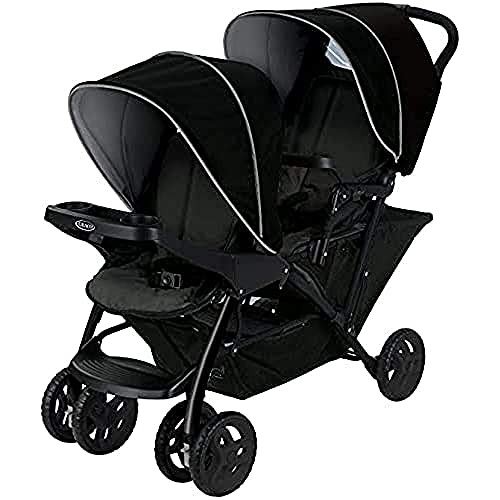Transitioning from Pram to Stroller: A Comprehensive Guide for Parents
Browsing the world of baby gear can be overwhelming for brand-new parents, especially when it concerns picking in between prams and strollers. Both serve essential functions, however they are developed for different needs and stages of a child's advancement. This article aims to notify moms and dads about the shift from prams to strollers, describing the advantages and factors to consider while offering practical ideas.
Understanding Prams and Strollers
Before diving into their differences, it's vital to comprehend what makes up a pram and a stroller.
Prams:
A pram, brief for perambulator, is usually developed for infants approximately around 6 months old. It features a flat, cushioned sleeping area and is mostly intended for transferring extremely young kids. Prams are designed for convenience and security, as newborns require to lie flat to support their spine and organs.
Strollers:
Strollers, or pushchairs, are developed for slightly older kids who can sit up unaided. They can be found in different styles and configurations, from lightweight umbrella strollers to heavier-duty designs suitable for rough terrains. Strollers are more versatile and simpler to navigate in congested spaces, making them a popular option for active households.
Benefits of Transitioning from Pram to Stroller
- Increased Mobility and Convenience
Strollers are normally lighter and more compact than prams, making them easier to steer through shops, public transport, and crowded locations. The majority of strollers can fold easily, enabling for hassle-free storage. - Flexibility for Different Activities
Modern strollers often come with multiple configurations and can accommodate numerous activities, consisting of running, outside adventures, and shopping journeys. Pram To Stroller can also adjust to suit kids of various ages and weights. - Boosted Child Comfort and Safety
Numerous strollers now come geared up with advanced safety functions, such as five-point harnesses and reclining seats, guaranteeing that older babies and toddlers stay comfy and safe during outings. - Cost-Effective Solution
Rather than acquiring both a pram and a stroller, households can buy a top quality stroller that satisfies the needs of their growing kid, possibly conserving money in the long run.
When to Make the Transition
The shift from a pram to a stroller typically occurs when the kid reaches around 6 to 7 months of age or when they can sit up unassisted. However, several aspects can influence this transition, including:
- Child's Development: If the kid shows signs of wishing to explore their surroundings, it may be time to switch to a stroller.
- Household Lifestyle: Active families may need a stroller quicker to accommodate trips and travel.
- Comfort: Observe the kid's comfort level. If they seem cramped in a pram or are ending up being more active, it's time to consider a stroller.
Picking the Right Stroller
Selecting the right stroller requires mindful factor to consider of a number of factors:
| Factor | Description |
|---|---|
| Security Features | Try to find durable building and construction, effective brakes, and harness systems. |
| Weight and Foldability | Select a light-weight stroller that is simple to fold and transfer. |
| Age Appropriateness | Make sure the stroller is fit for your child's age, weight, and height. |
| Maneuverability | Test how easily the stroller relocations and turns, especially in crowded spaces. |
| Storage Space | Consider the storage capacity below the stroller and the size when folded. |
| Adjustability | Search for strollers with adjustable functions, such as seat recline and manage height. |
FAQs about Transitioning from Pram to Stroller
Q: Is it needed to switch to a stroller?A: While it's not obligatory, switching to a stroller normally offers more flexibility and ease for both moms and dad and child as they grow. Q: What includes must I focus on
in a stroller?A: Prioritize security features, weight, foldability, and storage capability based on your lifestyle and activities with your child. Q: Can I utilize a stroller for newborns?A: Some strollers can accommodate baby safety seat or
have flat reclining seats, making them suitable for
newborns. Constantly inspect the manufacturer's standards. Q: How can I ensure my kid is comfortable in a stroller?A: Look for strollers with cushioned seats, numerous recline positions, and adjustable leg rests to accommodate your kid's convenience. Q: What are the best types of strollers available?A: Popular types consist of umbrella strollers, running strollers, travel system strollers, and convertible strollers, each accommodating variousrequirements. Tips for a Smooth Transition Test Out Different Models: Before committing to a purchase, physically test different strollers to see which one suits both you and your child best. Include Your Child:
If they are old enough, allow your
kid to attempt out different strollers to see which they find most comfy. Read Reviews: Consider taking a look at online reviews and suggestions from other parents to better inform your decision
. Prepare for Storage and Transport: Factor in how the stroller will fit into your cars and truck or home storage space to avoid future hassles.
- Assess Your Activities: Think about where and how you plan to use the stroller-- urban locations might need a various type compared to rural or off-road settings.
- Transitioning from a pram to a stroller is an essential milestone in a child's life and a significant decision for parents. By comprehending the distinctions and
advantages of each, parents can make informed choices that will support their family's way of life and their child's advancement. Equipped with the ideal information, moms and dads can with confidence navigate this transition and
guarantee that their kid is safe, comfortable, and ready for all the experiences ahead.

